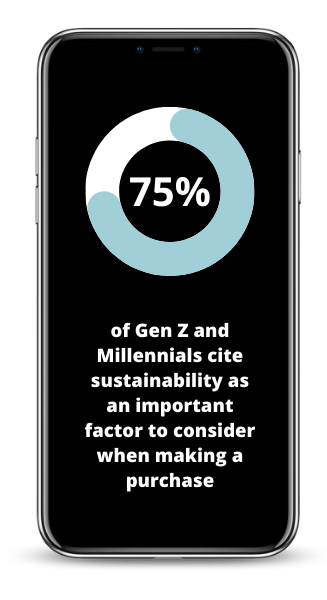

In recent years, the food and beverage industry has undergone significant transformation, driven by changing consumer preferences, advancements in technology, and the increasing demand for sustainable and healthy options. As a result, food subscription services like HelloFresh, Chef’s Plate, and GoodFood have emerged as major disruptors in the industry. These services provide consumers with a convenient way to access fresh, high-quality ingredients and diverse recipes tailored to their preferences, all while reducing food waste and supporting sustainable practices.
For brands in the food and beverage industry, it is crucial to stay informed about these trends and adapt their marketing strategies accordingly to remain competitive. By understanding the key factors driving the success of food subscription services and capitalizing on the opportunities they present, brands can not only maintain their market position but also expand their reach and customer base.
Why Food Subscription Services Appeal to Consumers
Food subscription services have seen tremendous growth in recent years, thanks to their ability to address several consumer needs and preferences. The convenience these services provide cannot be understated. They reduce or even eliminate the need for grocery shopping and meal planning, saving consumers valuable time and effort. Half of the consumers who subscribe to these services say these boxes allow them to focus on more important things in their lives, a significant boon in today’s fast-paced world. Moreover, the easy-to-follow recipes provided by these services help streamline the meal preparation process, further adding to their appeal.
In addition to saving time, these services also save food. By providing only the required amount of ingredients for each meal, these services minimize food waste and contribute to a more sustainable food system. And considering that Millennials and Gen Z prioritize sustainability in their purchasing decisions, with 75% of Gen Z and Millennials citing sustainability as an important factor to consider when making a purchase, this is a message that brands in this space will want to amplify. Food subscription services that focus on sustainable practices, such as sourcing local and organic ingredients or using eco-friendly packaging, can increase their appeal even further to environmentally conscious consumers, of which there is an ever-growing number.
However, while being eco-conscious and convenient are big draws, personalization is important with “70% stating that a company’s understanding of their personal needs influences their loyalty”. Consumers today are diet-diverse and being able to select meal plans that cater to their dietary needs is highly appealing. Food subscription services offer a wide range of meal plans and recipes, accommodating various dietary needs such as vegetarian, vegan, gluten-free, and low-carb options.
A Growing Market
The meal kit market’s projected growth, from $20.1 billion in 2021 to $64.4 billion by 2030, underscores the increasing popularity of food subscription services and the potential opportunities they offer for food and beverage brands. While the industry has expanded over the years, there are three big brands who together occupy significant share of the Canadian market; HelloFresh, Chef’s Plate, and GoodFood.

HelloFresh was one of the first meal kit delivery services, founded in 2011, and has since become a household name in the food and beverage space and one of the largest meal kit providers globally with much of their success coming down to their robust marketing strategy. The brand focuses on customer experience and engagement, with a strong presence on social media, interactive cooking tutorials, and collaborations with celebrity chefs and influencers.
Chef’s Plate and GoodFood are two other other leading meal kit delivery services in the Canadian market. Chef’s Plate and GoodFood were both founded in 2014 with the former in Toronto and the latter in Montreal.
They provide pre-portioned ingredients and simple recipes for convenient cooking at home. Their diverse menu caters to different dietary preferences, and their high-quality ingredients ensure delicious and wholesome meals. With a focus on empowering home cooks, Chef’s Plate has gained a loyal following and is a prominent player in the meal kit industry.
While each of these brands are distinct companies, they share a common business model and together, are helping to rejuvenate an industry by providing quality products and innovative recipes in a way that is engaging and places convenience and sustainability at the forefront.
Setting up for Success
Food subscription services provide a unique platform for partnership and collaboration among brands, restaurants, and players in the food and beverage industry. By focusing on the main reasons consumers choose subscription services—convenience, variety, and ease of use—brands can create appealing partnerships and offerings.
Sustainable sourcing
Increased demand for high-quality, sustainable ingredients has been fueled by food subscription services. All brands in the CPG and food and beverage space that can deliver on this demand are well-positioned to capitalize on this trend and build a loyal customer base. With more than half of consumers (55%) preferring sustainably sourced food options, brands emphasizing their sustainable sourcing practices through marketing materials, packaging, and social media, brands can appeal to environmentally conscious consumers who are concerned about the impact of their food choices.
Partner up
Food subscription services are known for their innovative and unique recipes, catering to consumers’ desire for variety and experimentation. Brands can partner with these services to offer exclusive or limited-edition products or flavors that align with the subscription service’s brand and customer base. This collaboration not only helps brands reach new customers but also fosters brand loyalty. Furthermore, leveraging social media and influencer partnerships to showcase unique recipes or products that complement the subscription service’s offerings generates buzz and attracts new customers.
Further, the popularity of food subscription services is pressuring traditional grocery stores and restaurants to adapt and offer similar services to stay competitive. Brands can partner with these channels to create exclusive products or meal kits, creating a sense of exclusivity and urgency among consumers. Additionally, brands can capitalize on the subscription-based model trend by offering their own meal kit or subscription services. This not only builds a loyal customer base but also increases brand awareness and recognition.
However, brands don’t need to create their own subscription model to capitalize on the success, there are numerous ways to work synergistically with food subscription brands to create mutual success. Examples include offering exclusive discounts or promotions through partnerships with food subscription services, including promotional materials like coupon inserts within subscription boxes to raise brand awareness and encourage trial, and collaborating with restaurants or other food and beverage brands to create unique meal kits or subscription offerings. Leveraging social media platforms and partnering with influencers in the food and lifestyle niches can maximize the effectiveness of these partnerships, reaching a wider audience and building credibility with potential customers.
Consider the Challenges
Skill Gaps
Food subscription services have experienced remarkable growth, but they also confront various challenges that require attention from brands to stay competitive. One challenge is the potential over-reliance on convenience, which some critics argue could hinder consumers from developing basic cooking skills. Further, consumers with beginner level cooking skills might be intimidated by the complexity of some recipes which could result in them passing over the service. To combat this, brands can consider providing educational content, such as cooking tutorials and skill-building resources, that empower consumers to enhance their culinary abilities.
Eco-conscious
An additional concern, especially for the eco-conscious consumer, is the environmental impact of the single use plastic packaging. Brands can address this issue by prioritizing eco-friendly packaging solutions, minimizing shipping distances, and emphasizing the reduction in food waste achieved through their portion-controlled meal kits. Furthermore, with “78% of people are more likely to purchase a product that is clearly labeled as environmentally friendly”, food subscription services will want to highlight the steps they’re taking to minimize the environmental impact to better appeal to consumers.
Increasing the appeal to consumers also means allowing flexibility and personalization of the meal plans. Many individuals might prefer to have greater control and customization options in their meal plans. Brands can address this by offering flexibility in their subscription services. They can allow customers to customize their meal plans by choosing specific ingredients or dietary preferences. This customization feature empowers consumers to tailor the meals to their taste preferences, dietary restrictions, or health goals.
Affordability is a significant consideration for many consumers, as a substantial portion express concerns about the price of food subscription services, concerns that are heightened further by overall cost-of-living increases. One approach to enhancing affordability is to provide different subscription tiers or plans. By offering various pricing options, brands can accommodate different budgets and allow customers to choose a plan that suits their financial needs. For instance, they can introduce a basic plan with essential meals at a lower cost, while also offering premium plans that include more elaborate or specialized menu options for those willing to spend more. This tiered pricing strategy caters to a broader range of consumers, making the service accessible to a wider audience.
By understanding and addressing these challenges, food and beverage brands can effectively attract and convert potential customers, solidifying their position in the rapidly expanding food subscription service market.
Ongoing Opportunities
Food subscription services present numerous opportunities for CPG and food and beverage brands to reach new customers, build brand loyalty, and drive sales. By embracing the trends and opportunities in this space, brands can create unique and exclusive offerings that resonate with consumers and help them stand out in a competitive market. Additionally, by launching their own direct-to-consumer (DTC) food subscription services, brands can increase revenue, gain valuable insights into their consumer base, and strengthen their market position.
As the food and beverage industry continues to evolve, brands in the industry must stay informed of the latest trends and developments to remain competitive. By understanding the factors driving the success of food subscription services and capitalizing on the opportunities they present, food and beverage brands can ensure their long-term growth and success.